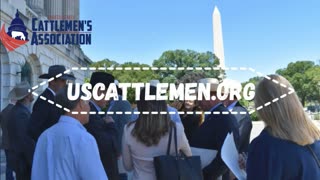Premium Only Content

Advocacy for mushroom vape Tiger milk
Tiger milk
Cited:
https://szuting.wixsite.com/ligno/product
https://pubmed.ncbi.nlm.nih.gov/36164453/
Full text:
https://www.ncbi.nlm.nih.gov/pmc/articles/PMC9509233/
Malaysian national treasure
Tiger Milk Mushroom has more than 400 years history in medical use, as quoted and called as “Lac Tygridis” by John Everlyn, a European government servant, in his “The Diary of John Everlyn” in 1664.
He also reported that Tiger Milk Mushroom was used by the local people to treat diseases that European doctors found no cure for.
The sclerotium of this mushroom is where all the medicinal benefits come from.
Wild and cultivated varieties are found comparative.
The bioactive compounds of medicinal mushrooms could be isolated from the mycelium, sclerotia and fruiting bodies during the growth process [25]. These biochemicals with pharmacological effects play a preventive and therapeutic role in disease. Polysaccharides are one of the therapeutic compounds of L. rhinocerotis, and numerous studies have shown that PLR is related to antitumor and immunomodulatory effects [26–29]. Phenolic compounds, as natural antioxidants, was able to scavenge free radicals, and the quantification of total phenolic content and total flavonoid content can be used as indicators to evaluate antioxidant capacity. Among the proximate analysis of physicochemical contents, the extraction rates of LRR (7.98%) was higher than those of LRS (5.37%) and LRW (1.86%) and the physicochemical content of cultivated LR was 4~5 times higher than wild L. rhinocerotis, which could be explained by the uncertain harvesting time and the harsh living conditions in the wild; conversely, the cultivated L. rhinocerotis was harvested under relatively fertile conditions. Per gram of dry aqueous extract, LRW had the highest polysaccharide content. LRS had the highest flavonoid and polyphenol contents.
In short, both cultivated and wild L. rhinocerotis are abundant in bioactive compounds.
Most diseases are closely related to the excessive secretion of free radicals, and the excessive production of free radicals leads to oxidative damage, which exacerbates diseases and causes a series of pathologies; thus, the exploration of natural antioxidants is increasingly urgent [36]. The aqueous extracts of L. rhinocerotis have good antioxidant activity [37, 38]. Antioxidant experiments, such as the ferric-reducing antioxidant power assay (FRAP), ABTS radical scavenging assay, and DPPH radical scavenging assay, were used to evaluate the antioxidant activity of various extracts [39]. For the ABTS and DPPH assays, the scavenging capacities of aqueous extracts of LRW and LRS were lower than that of LRR, which revealed that LRS has a stronger antioxidant activity. In the FRAP assay, LRW had the strongest FRAP scavenging capacity (7.37 ± 0.18 μg AAE/mg of DAE). This may be related to the high content of total polyphenols and flavonoids. The mechanisms of the inhibition of redox reactions by antioxidant ingredients are different, such as producing superoxide anions, facilitating metal ion chelation, and promoting free radical chain reactions.
5. Conclusions
In this study, the differences between cultivated and wild L. rhinocerotis were elucidated. Both cultivated and wild L. rhinocerotis are abundant in bioactive components, and they both have antioxidant activities. This is the first time that metabolomics analysis has been applied to the study of L. rhinocerotis quality and the LRR, LRS, and LRW can be discriminated by untargeted metabolite profiling. In the antipulmonary injury experiments, the results suggested that wild L. rhinocerotis was more effective than cultivated. Moreover, PLRW plays an anti-inflammatory and antiapoptotic role in LPS-induced MRC-5 injury. PLRW may defend against cell damage by activating the NLRP3/caspase-1 pathway. In summary, both cultivated and wild L. rhinocerotis are abundant in bioactive components and have antioxidant and anti-inflammatory activities.
Acknowledgments
This work was supported by the project of the National Survey of Traditional Chinese Medicine Resources (project no. GZY-KJS-2018-004) from the National Administration of Traditional Chinese Medicine, the fund for improving medical service and security capacity of the department of social security, Ministry of Finance (Grant no. (2019)39), and Guangdong provincial rural revitalization strategy special project—Guangdong Modern Southern Medicine Industry Technology System Innovation Team (2020KJ148).
Abbreviations
L. rhinocerotis: Lignosus rhinocerotis
LRR: Lignosus rhinocerotis cultivated in rice medium
LRW: Lignosus rhinocerotis cultivated in wild
LRS: Lignosus rhinocerotis cultivated in sawdust medium
PLRR: The polysaccharides of Lignosus rhinocerotis cultivated in rice medium
PLRW: The polysaccharides of Lignosus rhinocerotis cultivated in wild
PLRS: The polysaccharides of Lignosus rhinocerotis cultivated in sawdust medium.
-
 1:57:01
1:57:01
BEK TV
1 day agoTrent Loos in the Morning 4/30/2025
23.1K1 -
 15:35
15:35
The Illusion of Consensus
1 day agoRav Arora Warns Danger of Mass Immigration In Canada
13.8K9 -
 26:33
26:33
CatfishedOnline
1 day agoI Sent $150k And Sold My Home For Online Love!
62.3K17 -
 7:37
7:37
The Shannon Joy Show
13 hours ago💀 Doctor Death: NY’s Suicide Bill
26.1K13 -
 19:05
19:05
This Bahamian Gyal
16 hours agoWhy would SHANNON SHARPE risk EVERYTHING for THIS?
23.6K6 -
 34:53
34:53
Uncommon Sense In Current Times
17 hours ago $3.27 earnedEconomist Breaks Down Trump Tariffs | Dr. Jonathan Newman
32.3K17 -
 13:23
13:23
NinjaGamblers
1 day ago $0.71 earnedMasaniello Betting Strategy at Roulette: Guaranteed Wins Every Time??
30.7K3 -
 1:00:43
1:00:43
Trumpet Daily
21 hours ago $5.66 earnedCanada Hates Trump More Than the Trudeau Disaster - Trumpet Daily | Apr. 29, 2025
33.7K29 -
 53:01
53:01
State of the Second Podcast
18 hours agoDisarming Americans One Law at a Time (ft. Krate Tactical)
24.2K4 -
 44:36
44:36
The Official Steve Harvey
14 hours ago $0.91 earnedThe journey ain't easy, but the destination is worth it
26.8K2